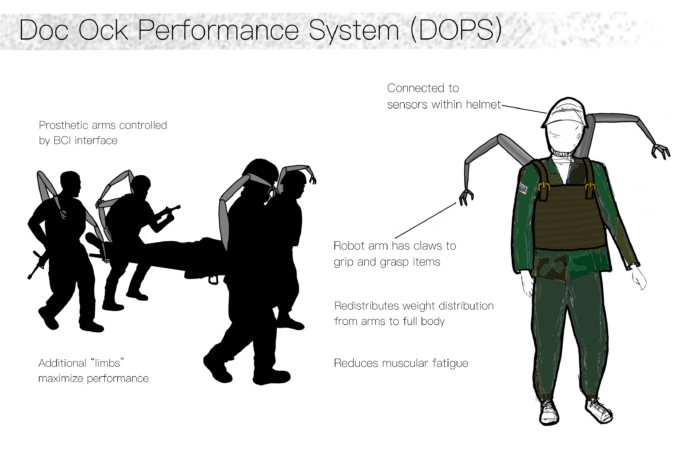Description:
The Doc Ock Performance System (DOPS) is an assistive technology that combines the physical abilities of prosthetics with the functional capabilities of AI (Artificial Intelligence) and BCI (Brain Computer Interface) to help translate the measured myoelectric activity data into commands for moving prosthetic limbs. Helmets are equipped with internal sensors that measures myoelectric activity- electrical activity generated by the muscles– which is translated through AI to result in specific movements of the prosthetic. Additional “arms” are affixed to the backside of the user, and operate similarly to robotic arms, and follow similar kinematics within the movement. The tip of the arms features a claw with an opposable joint to allow for the grabbing of things. Lightweight materials are required to lessen the additional weight load of the device. When idle, the arms may be folded up into a stationary position to prevent disruptions in movement due to the arms snagging on the surroundings.
Analysis:
A major point of concern when thinking about mass casualty is the limited amount of resources available. These resources (people, devices, technology) can be easily overwhelmed if a large amount of individuals need them at once, which would almost surely happen in a mass casualty. It seems that manpower, more specifically skilled manpower, is limited in many situations of casualty. First responders are very skilled in what they do, however there are relatively few amounts of these individuals in the grand scheme of humanity.
In the realm of warfare, the role of the medic is wide. They are responsible for providing, training, triage, and medical care. While the medic is a very skilled individual whose place in a platoon is crucial, there is traditionally only one medic per platoon, leaving the medic to delegate tasks to other soldiers who are capable of tending to minor medical emergencies.




